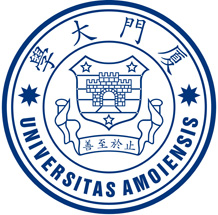
 |
 |
 |
 |
 |
-Keynote Speech
| Professor Junzo Watada (Waseda University) | |
 |
Topic : Recent Topics of Imbalanced Data Classification |
|
Although knowledge discovery and data mining techniques have been successfully employed to various real-world applications, the classification of an imbalanced dataset remains challenging. This challenge has attracted attention from both academia and industry. Classification analysis is one of core research topics in pattern recognition field. According to the distribution of samples, algorithms like artificial network (ANN) and support vector machine (SVM) have been proposed to perform binary classification. But these traditional classification algorithms hardly work well for imbalanced dataset. This talk illustrates recent results in imbalanced data classification.
I Education II Profession III Research Interests IV Academic Contribution V Awards |
|
| Professor Yong Xu | |
 |
Topic : Global and Local Methods in Face Representation and Recognition |
Global and local methods in face representation and recognition Face recognition has received more and more attention. The automatic face recognition technology can be applied to personal authentication, access control, check on work attendance, etc. However, this technology is greatly influenced by varying poses, illumination and facial expression, as well as aging variation. This requires that robust face representation and recognition methods be proposed. The majority of face representation and recognition methods can be grouped into two kinds, global methods and local methods. Global methods exploit the global structure and information inside the face images to recognize faces. Typical examples of global methods include principal component analysis (PCA), linear discriminant analysis (LDA), and so on. Most of global methods are in the scope of statistical methods and are trained by only training samples, which are only a few sampling results of real face images. Consequently, the statistical methods are good at representing the variation of face images that have been observed, but is not competent in representing “unseen” variation of the face images. The test sample can be somewhat viewed as “unseen” variation of the face images, especially in the complex conditions. Thus, it seems that we should not desire that the global methods bring us a surprise in face recognition performance. There are two kinds of local methods. The first kind of local methods try the best to use the local structure and information of training samples. These methods are also in the scope of statistical methods. Typical examples include Graph embedding methods, locality preserving projection (LPP), manifold learning. The second kind of local methods attempts to exploit “local” training samples to provide representation for the test sample. Typical examples include the sparse representation method (SRM). SRM usually exhibits a good face recognition performance, but it appears that people cannot provide an explanation for the performance from the viewpoint of applications. In order o make more progresses in face recognition, we have to explore and do more. At the moment, to develop computationally efficient and theoretically explainable SRMs and to construct a bridge for SRM and global methods are two things that are worth doing. |
|
Yong Xu was born in Sichuan, China, in 1972. He received his B.S. degree, M.S. degree in 1994 and 1997, respectively. He received the Ph.D. degree in Pattern recognition and Intelligent System at Nanjing University of Science & Technology (China) in 2005. From August 2007 to May 2008, he works at The Hong Kong Polytechnic University as a researcher assistant. Now he works at Shenzhen Graduate School, Harbin Institute of Technology. In 2008, Yong Xu was supported by Program for New Century Excellent Talents in University of China. His current interests include biometrics, feature extraction, machine learning, image processing and video analysis. He has published more than 60 scientific papers. |
|
 |
||
The Fifth International Conference on Genetic and Evolutionary Computing |
||
